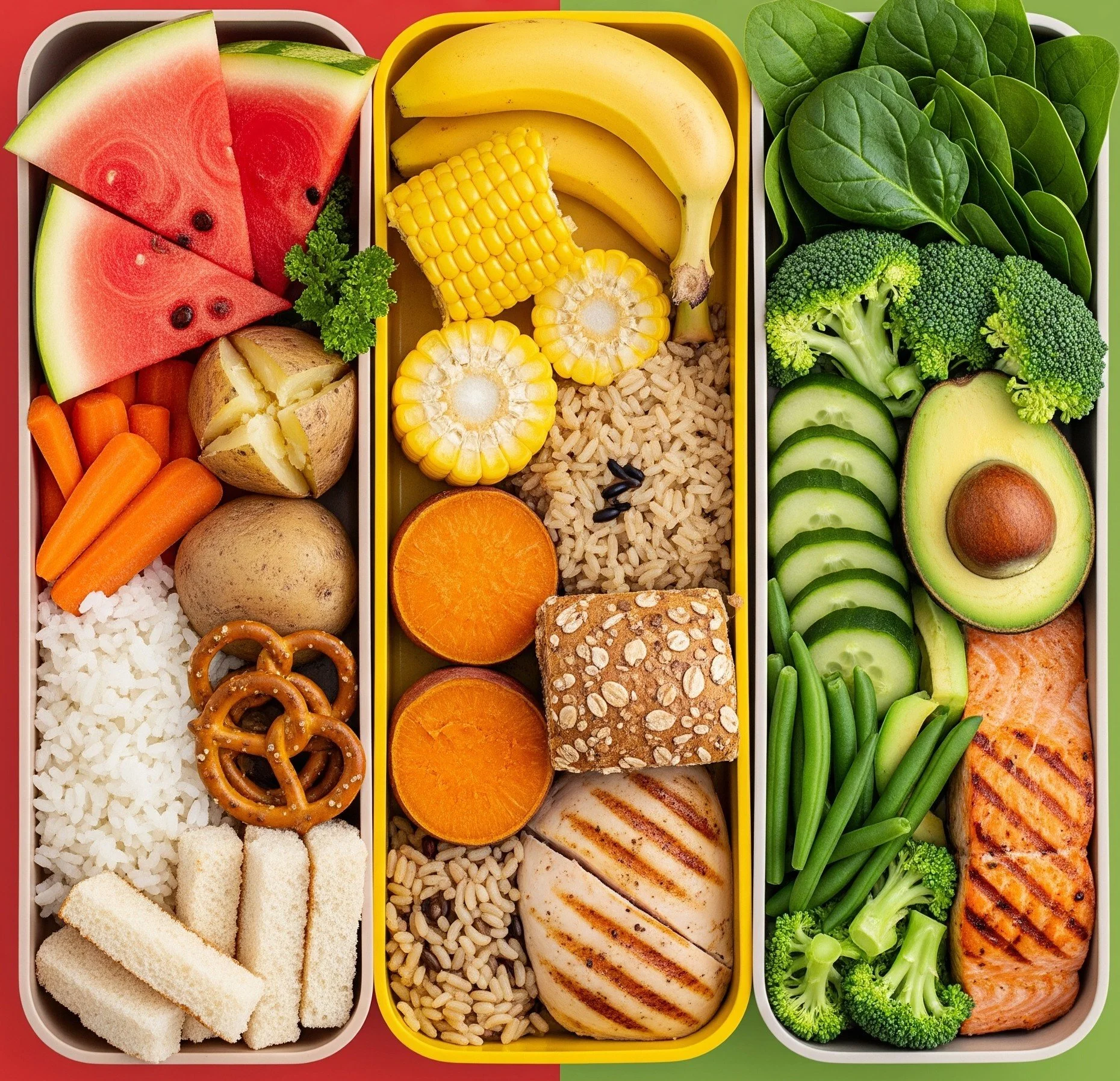How Different Foods Affect Your Blood Sugar (and How to Use This to Your Advantage)
We're going to explore a simple but powerful idea called the Glycemic Index, and how understanding it can help you feel better, have more steady energy, and even improve your health, especially if you're dealing with blood sugar concerns.
Ever feel super energized after a meal, only to crash and feel tired an hour later? Or maybe you're trying to eat healthier but aren't sure which foods are truly helping you? This article is for you! We're going to explore a simple but powerful idea called the Glycemic Index, and how understanding it can help you feel better, have more steady energy, and even improve your health, especially if you're dealing with blood sugar concerns.
What is the Glycemic Index and Why Should You Care?
Imagine you eat a piece of white bread. Then imagine you eat a bowl of oatmeal. Do you think they affect your body in the same way? Not quite! The Glycemic Index (GI) is like a speedometer for how quickly the carbohydrates in a food turn into sugar in your bloodstream.
High GI foods (like white bread, sugary cereals, or fruit juice) are like hitting the gas pedal – they cause a quick and big jump in your blood sugar.
Low GI foods (like whole-grain bread, most vegetables, beans, and lean meats) are more like a slow, steady cruise – they cause a gentler, more gradual rise in your blood sugar.
Why does this matter to you?
Steady Energy, No Crashes: When your blood sugar shoots up fast and then drops, you often feel that "sugar crash" – tired, hungry, and maybe even a little grumpy. Low GI foods help keep your energy levels more stable throughout the day.
Feeling Fuller, Longer: Foods that cause quick sugar spikes can make you feel hungry again sooner. Low GI foods help you feel satisfied for longer, which can be helpful if you're trying to manage your weight.
Taking Control of Your Health: Regularly having big blood sugar spikes can put a lot of stress on your body over time. Learning about GI can give you a simple way to make smarter food choices that support your overall health.
How Your Food Choices (Using GI Info) Affect Your Health
Understanding the GI can be especially powerful if you're concerned about your blood sugar, perhaps if you have prediabetes or diabetes.
If you have Prediabetes: This means your blood sugar levels are higher than normal, but not high enough to be called full-blown diabetes yet. It's a warning sign, and a chance to make changes! Choosing more low GI foods is a fantastic way to help your body manage blood sugar better. It can help prevent or delay type 2 diabetes, keeping you healthier in the long run.
If you have Diabetes: For people with diabetes, keeping blood sugar levels stable is a daily challenge and a key to good health. Low GI foods can be a big help here. They lead to smaller, more controlled increases in blood sugar after meals, which can make it easier to manage your condition and reduce the risk of complications. It's not the only tool, but it's an important one, alongside counting carbs and watching portion sizes. Always chat with your doctor or a dietitian to create the best eating plan for you.
Common Misconceptions About the GI
It's easy to misunderstand the GI, so let's clear up a few common ideas:
GI isn't the only factor in "healthy": A candy bar might have a lower GI than a baked potato (because of its fat content slowing digestion), but that doesn't make the candy bar healthier! Always think about the overall nutrition – vitamins, minerals, and fiber.
How you cook matters: The way food is prepared can change its GI. For example, overcooked pasta has a higher GI than pasta cooked "al dente" (still a bit firm).
Everyone is a little different: Your body might react slightly differently to a food than someone else's. Also, what you eat with a high GI food can make a difference. Eating protein or fat with carbs can slow down sugar absorption.
Putting It All Together for Your Advantage
Thinking about the Glycemic Index doesn't mean you need to be a math expert at every meal. It's more about understanding the general idea:
Choose more whole, unprocessed foods: These are almost always naturally lower GI. Think whole grains, fruits with their skin, vegetables, lean proteins, and healthy fats.
Limit highly processed foods: These often contain refined sugars and flours that are high GI.
Balance your meals: If you do eat a higher GI food, try to pair it with a good source of protein, healthy fats, or fiber to help slow down its effect on your blood sugar.
By making a few smart switches, you can use the Glycemic Index to your advantage, keeping your energy steady, feeling fuller, and boosting your long-term health. It's a simple change that can make a big difference!
BTW, when writing this article, we found a great resource including an app over at https://glycemic-index.net/glycemic-index-chart/



